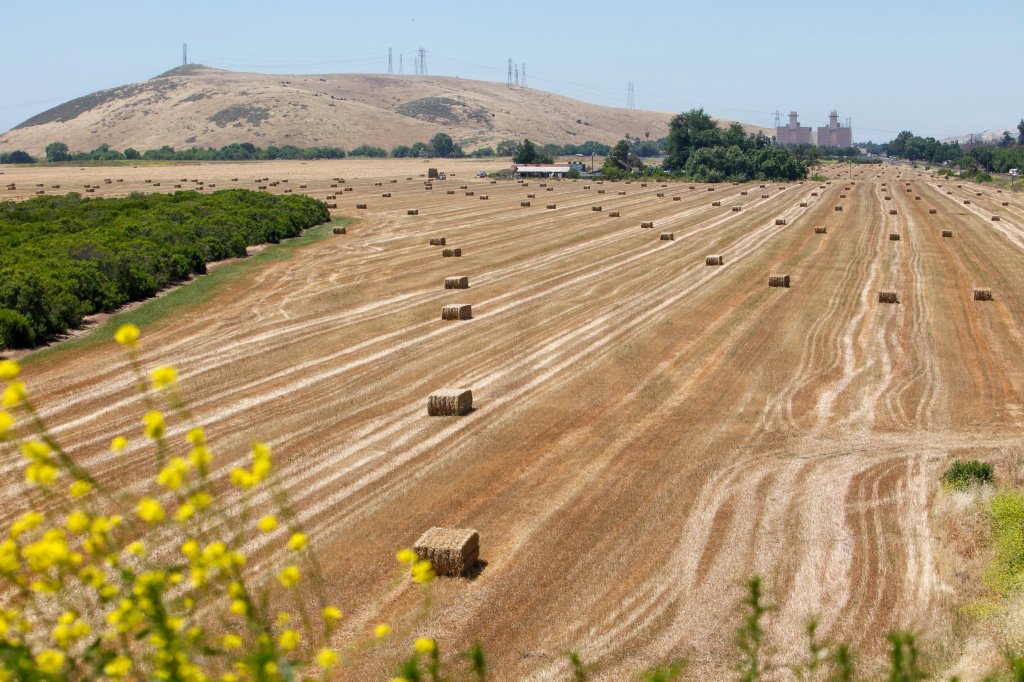 Ending more than 35 years of development battles on one of Silicon Valley’s most sought-after landscapes, the San Jose City Council on Wednesday is expected to approve a $93 million deal to purchase 937 acres in Coyote Valley, a rural expanse of farmland and open space on the city’s southern edges.
Ending more than 35 years of development battles on one of Silicon Valley’s most sought-after landscapes, the San Jose City Council on Wednesday is expected to approve a $93 million deal to purchase 937 acres in Coyote Valley, a rural expanse of farmland and open space on the city’s southern edges.
In the 1980s, Apple eyed Coyote Valley as a place to build its world headquarters. In the 1990s, Cisco Systems tried to build a massive campus there. Both were fought by environmental groups, who said the area — currently used by farmers and wildlife — should be left in its natural state.
“This is an opportunity for us to preserve an important part of our past and do so with a clear eye to the future,” said San Jose Mayor Sam Liccardo. “Nobody ever regretted the opportunity to enjoy an open vista of green space. We shouldn’t foreclose that for our children and grandchildren.”
Under the deal, the city will pay $46 million, and the Peninsula Open Space Trust, a non-profit group based in Palo Alto, will pay $42 million, to complete the purchase from leading Silicon Valley developers Brandenburg Properties and the Sobrato Organization. The Santa Clara Valley Open Space Authority will also contribute $5 million.

The land, which runs down the western edge of Highway 101 and abuts Bailey Avenue, forms a key connection that allows wildlife — from mountain lions to deer — to move from the Diablo Range to the Santa Cruz Mountains, scientists say. The properties, left undeveloped, also will be used to provide natural flood protection for downtown San Jose, so that when Coyote Creek is flooding, as it did in 2017, causing $100 million in damage, its waters can be spread over the open area instead of rushing downtown into neighborhoods.
In a broader sense, the deal, which the council is expected to approve, preserves one of the last reminders of San Jose’s rustic agricultural past, when orchards, fields and canneries gave the region the nickname “Valley of Heart’s Delight” before electronics companies, the computer industry, sprawling subdivisions and traffic swallowed much of it up starting in the 1950s.
“This is the last vestige of that absolutely stunning area, Valley of Hearts Delight,” said Walter Moore, president of the Peninsula Open Space Trust. “It’s the last big flat valley in San Jose from that era that hasn’t been paved over.”
The land is currently zoned for light industrial development. The city’s general plan allowed for up to 30,000 jobs there. Those will need to be moved elsewhere, city leaders acknowledge.
“This deal is a good idea, and I’ll be supporting, it, but now we have to look for places where we can put industrial development,” said San Jose City Councilman Johnny Khamis. “It’s going to put us in a little bit of a tough spot, but we’ll work on it. A lot of people are saying we have to build taller. That might work for biz building but it doesn’t work for manufacturing.”
In 2000, Cisco pushed to build a 6.6 million-square foot campus with 20,000 workers on the site, which sits at the northern edge of Coyote Valley. The city council approved the plans, and the Sierra Club and Santa Clara Valley Audubon Society sued unsuccessfully to stop it. Cisco dropped its plans two years later after the tech economy collapsed for several years.
More recently, Brandenburg and Sobrato did not submit development plans.
After the deal closes, San Jose will retain ownership of 296 acres, and the rest will go eventually to the Santa Clara Valley Open Space Authority, a government agency based in San Jose that operates public open space preserves on both sides of Coyote Valley.

The authority will begin organizing docent-led tours for the public in the next month, said Andrea MacKenzie, the agency’s general manager. After that, it will lead a three-year planning effort with public meetings to draw up plans for the property, including trails, restoration of creeks, and wildlife tunnels and corridors under Monterey Highway.
The entire project to renovate the landscape could take 10 years and cost more than $100 million, she said. That funding is likely to come from private sources, state grants and federal funds.
“This is San Jose’s last great open space,” said Mackenzie. “We are going to do this right. Coyote Valley and the promise that it offers is on par with some of the great natural open spaces in the Bay Area.”
She noted that not only can the area and its wetlands help with flood control, it also sits on a major underground drinking water aquifer that the South Bay needs to be preserved.
And the wildlife is noteworthy. The area is home to numerous rare and endangered species, including the jewel flower, bay checkerspot butterfly, western burrowing owl, tiger salamander, tri-colored blackbird, red-legged frog, and Swainson’s hawk. So far, 224 species of birds have been documented there.
The deal took four years to work out, and funding was complicated.
The city’s share for the purchase will come from Measure T, a $650 million bond measure approved by San Jose voters last November to upgrade emergency services, pave roads, build bridges, and improve flood control. That measure, which passed with 71 percent support, included up to $50 million to preserve Coyote Valley.
Measure T, along with two other items on the June, 2018 ballot, Measure B and Measure C — in which voters rejected efforts to change the city’s general plan to allow more development in the Evergreen area — sent a signal, Moore said.
“Those measures showed the will of the people,” Moore said. “The landowners were starting to see that the public wanted a new vision for the area and they were willing to cooperate.”
Brandenburg and Sobrato issued a joint statement echoing that view.
“More times than not, unfortunately, the environmental community and the development community don’t see eye to eye,” the companies said. “This major step in the permanent protection and preservation of a significant portion of the Coyote Valley is an example of a public-private effort where the parties collaboratively and cooperatively persevered with one another in positive spirit to achieve the will of the voters of San Jose.”
For environmental groups, the news has been breathtaking.
“It’s beyond exciting,” said Megan Fluke, executive director of the Committee for Green Foothills. “This has been the biggest issue for the local conservation community in the South Bay for more than a generation. There are plenty of people who worked on this for years who are no longer here. Hopefully they are smiling down on us. There’s just such a feeling of joy that this landscape is being preserved.”










